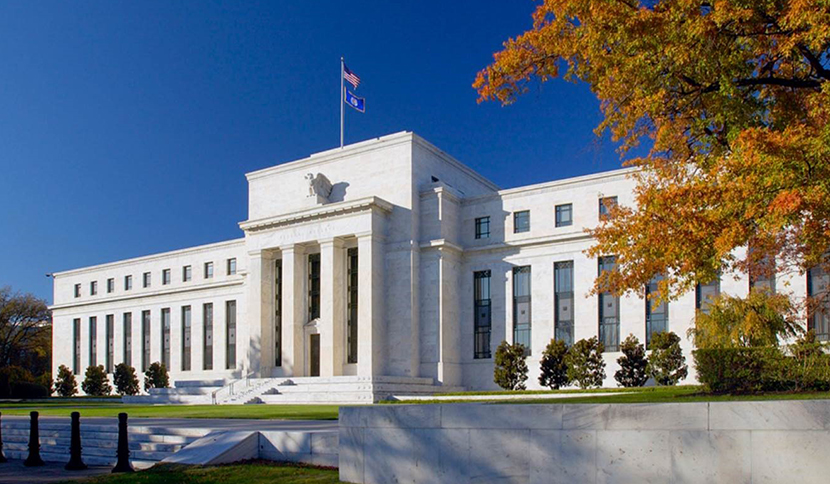
Fed Holds Rates Steady Again

(Federal Reserve headquarters, Washington, D.C.)
The Federal Reserve again held rates steady July 31, noting that there has been “some further progress toward the Committee’s 2% inflation objective” over the past few months.
“The FOMC did not change its target for the federal funds rate but did shift its statement to acknowledge that inflation is slowing, unemployment is rising, and that there are now more balanced risks to the economy. While the Fed still hopes for a slower rate of inflation, there is a greater risk now that keeping monetary policy overly tight for too long could lead to unnecessarily higher unemployment,” said MBA SVP and Chief Economist Mike Fratantoni.
“The FOMC vote to keep rates steady for now was unanimous, but there have been increasing calls from many Federal Reserve officials to begin cutting rates. We are holding to our call for two rate cuts this year, with the first in September, as we expect that inflation will continue to moderate,” he continued. “Mortgage rates are now well below 7%, and there has been some modest pickup in refinancing activity in recent weeks. We expect that mortgage rates will continue to drift lower through the remainder of the year, particularly if the Fed does launch a series of rate cuts in September.”
However, “even with a September rate cut possible, mortgage companies will continue to face meaningful earnings headwinds for the foreseeable future,” said Eric Orenstein, Senior Director, Fitch Ratings. “With most outstanding mortgages still carrying rates below 5% and record home prices driving down affordability, it may be a long road back to higher origination volumes.”
The full FOMC statement read:
Recent indicators suggest that economic activity has continued to expand at a solid pace. Job gains have moderated, and the unemployment rate has moved up but remains low. Inflation has eased over the past year but remains somewhat elevated. In recent months, there has been some further progress toward the Committee’s 2% inflation objective.
The Committee seeks to achieve maximum employment and inflation at the rate of 2% over the longer run. The Committee judges that the risks to achieving its employment and inflation goals continue to move into better balance. The economic outlook is uncertain, and the Committee is attentive to the risks to both sides of its dual mandate.
In support of its goals, the Committee decided to maintain the target range for the federal funds rate at 5-1/4 to 5-1/2%. In considering any adjustments to the target range for the federal funds rate, the Committee will carefully assess incoming data, the evolving outlook, and the balance of risks. The Committee does not expect it will be appropriate to reduce the target range until it has gained greater confidence that inflation is moving sustainably toward 2%. In addition, the Committee will continue reducing its holdings of Treasury securities and agency debt and agency mortgage‑backed securities. The Committee is strongly committed to returning inflation to its 2% objective.
In assessing the appropriate stance of monetary policy, the Committee will continue to monitor the implications of incoming information for the economic outlook. The Committee would be prepared to adjust the stance of monetary policy as appropriate if risks emerge that could impede the attainment of the Committee’s goals. The Committee’s assessments will take into account a wide range of information, including readings on labor market conditions, inflation pressures and inflation expectations, and financial and international developments.
Voting for the monetary policy action were Jerome H. Powell, Chair; John C. Williams, Vice Chair; Thomas I. Barkin; Michael S. Barr; Raphael W. Bostic; Michelle W. Bowman; Lisa D. Cook; Mary C. Daly; Austan D. Goolsbee; Philip N. Jefferson; Adriana D. Kugler; and Christopher J. Waller. Austan D. Goolsbee voted as an alternate member at this meeting.
